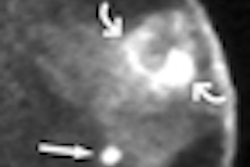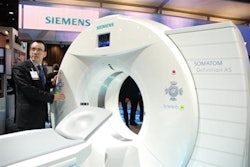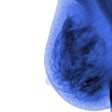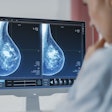Where a woman is in her menstrual cycle may affect the accuracy of screening mammography, a finding that could have particular relevance for women ages 40 to 49, according to a new study published online December 3 in Radiology.
Researchers at the Group Health Research Institute in Seattle investigated the sensitivity, specificity, and cancer detection rate of screening mammography according to week of menstrual cycle among premenopausal women receiving regular mammograms.
Diana Miglioretti, PhD, and colleagues used Breast Cancer Surveillance Consortium data to analyze 387,218 screening mammograms linked to 1,283 breast cancers, classified by week of menstrual cycle. The data included both film-screen and digital screening mammograms taken between 1996 and 2007 in premenopausal women between the ages of 35 and 54 who had no history of breast cancer, mastectomy, or breast augmentation.
Miglioretti's group excluded mammograms of women who were taking oral contraceptives at the time of the exam, as well as mammograms of women whose last menstrual period had occurred more than 35 days earlier.
Overall, the sensitivity and specificity of the mammograms didn't differ significantly by week in the menstrual cycle. But when Miglioretti's team subdivided the results according to whether or not a woman had received screening mammography before (as opposed to the exam being her first one), they found that there were differences in mammography performance.
For 66.6% of women who had regular screening, sensitivity was higher in week 1 (79.5%) than in subsequent weeks (70.3%, 67.4%, and 73%, respectively). For the 17.8% of women who had screening mammography for the first time in this study, sensitivity was lower during the follicular phase (week 1, 72.1%; week 2, 80.4%; as compared to week 3, 84.6%; and week 4, 93.8%).
Among premenopausal women who had screening mammography in the previous two years, the exam was more sensitive in detecting breast cancer in those who had been imaged during the first week of their menstrual cycle compared with those who underwent mammography during the second, third, or fourth week of the cycle -- weeks that are associated with higher breast density, according to Miglioretti and colleagues.
"If screening during the follicular phase increases the sensitivity of mammography in women who undergo regular screening, the mechanism may be lower mammographic breast density during that phase," they wrote.
Why would mammography be less sensitive in women who undergo regular screening as opposed to women undergoing their first mammography screening exam? Because tumors tend to be smaller in this population, while cancers detected at first mammography are larger, on average, and more easily detectable. Fluctuations in breast density may have less influence on the sensitivity of mammography for these tumors, according to the researchers.
By Kate Madden Yee
AuntMinnie.com staff writer
December 7, 2010
Related Reading
Annual mammograms reduce mastectomy risk in younger women, December 6, 2010
Mammograms catch few cancers in young women: study, May 4, 2010
HHS states support for younger mammo screening, November 19, 2009
Benefits of mammographic screening in young women still unclear, December 8, 2006
More DMIST analysis supports FFDM in younger women, dense breasts, November 26, 2006
Copyright © 2010 AuntMinnie.com




















